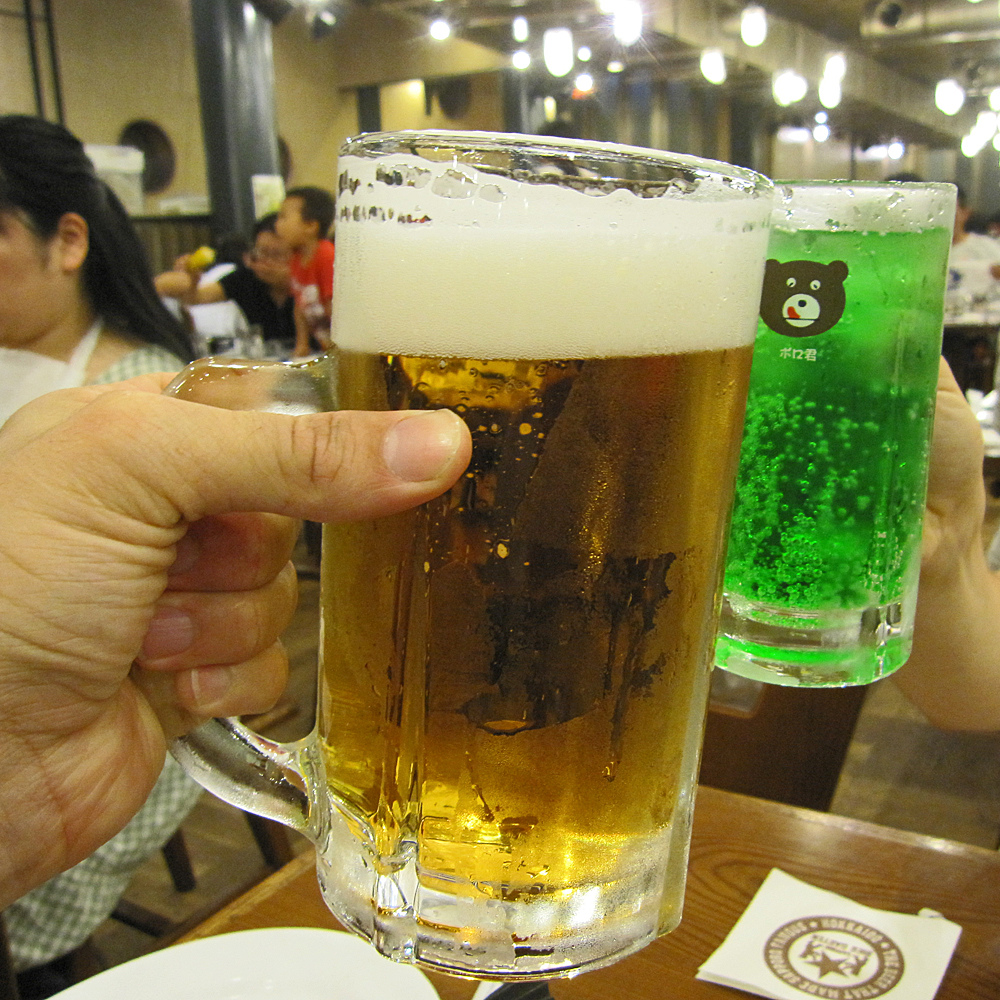Jul 24, 2017
No One Does Beer Gardens Like Japan

It’s summer. It’s hot. And for many that means only one thing – beer gardens. The summertime treat, however, does not have its origins in cold brews quenching parched summer thirsts.
Five hundred years ago in Bavaria the brewing of beer was legal only between the feast of St. Michael on September 29 and feast of St. George on April 23. It was not a religion thing but a prohibition born out of practicality. Authorities were concerned that the heat from brewers’ coal-fired kettles could catch fire in the dry summer conditions and burn down their towns. Besides that, the discerning Bavarian taste buds knew that lagers fermented at temperatures no greater than 55 degrees Fahrenheit produced the best ales.
What to do? Drinking no beer in the summer was not an option. Brewers tunneled deep into the ground – 15, 20, 25 meters deep – to create storage cellars. To keep beer brewed in the winter cold, ice was packed on top. To further protect the precious brews, trees were planted over the underground cellars to provide shade to keep the sun from heating the earth. In the summer the brewers set up tables and dispensed the beer directly to customers in these sylvan paradises.
Local innkeepers were not happy with this competition and in 1812 King Maximilian forbid brewers to sell any food beyond bread with their beer. Instead, patrons brought their own food to the beer and the beer garden was born. By the late 1800s, beer gardens were popular in Japan as well. They remain an anticipated summer highlight across the nation today as restaurant and department store rooftops, parks, and hotels transform into beer gardens.
Beer Gardens, Japanese Style
With many foreign traditions, Japan borrows and then puts on its own spin. Beer gardens are no different. Long tables and communal imbibing proliferate as they do elsewhere but a Japanese beer garden is a feast unto itself. Western beer gardens typically charge by the glass and usually at the same rate as the indoor tap. Where’s the celebration in that? A Japanese beer garden usually charges one flat rate.
The key words are “tabehodai” and “nomihodai” – all you can eat and all you drink. And the food found at a Japanese beer garden is not the typical pub fare only meant to stir your thirst. The peanuts and pretzels are swapped out for entree-style menu items – seafood, sushi, grilled chicken, fried rice and so on. Now that is a summer treat.
The Kansai region abounds in summer beer gardens at many price points. Shop around as some have no time constraints for the all-you-can-eat-and-drink festivities and others have bookings for 90-minutes or two hours. Japanese beer gardens vary greatly in size, from just a few dozen patrons to many hundreds at some of the large hotels. Some are self-service and others offer table service. Check for the different themes brewed up for the beer garden – Mexican, Tahitian, Hawaiian and other exotic locales are popular; some feature live entertainment. Many special events are also held where advance reservations will be required. The pours at Japanese beer gardens stop in late September and early October so now is the time to grab hold of a frosty mug. Cheers.
By H.L.I.T. (Sapporo Bier Garten) [CC BY 2.0], via Wikimedia Commons


About the author